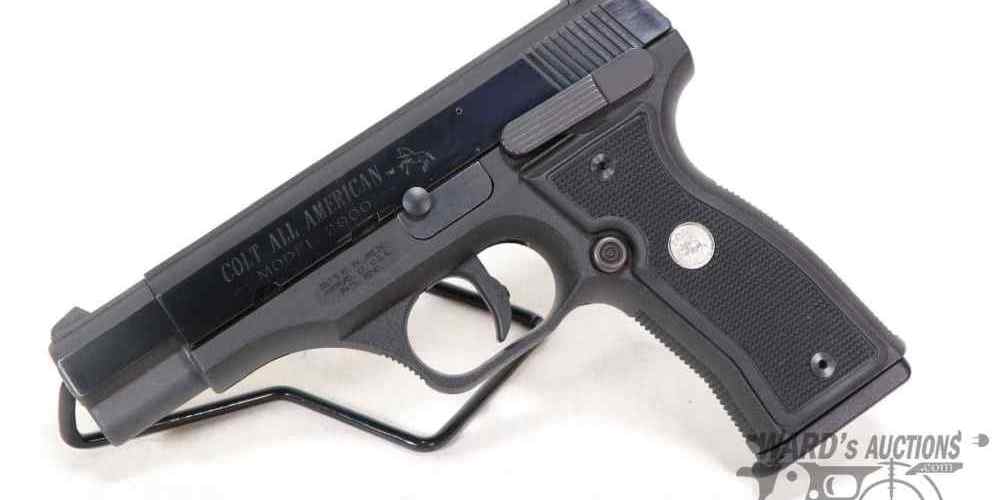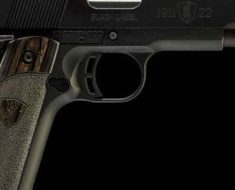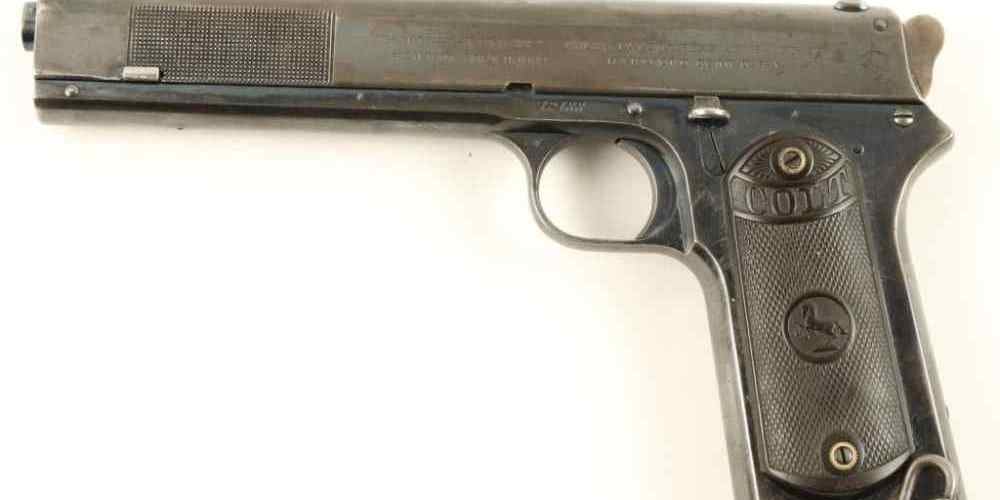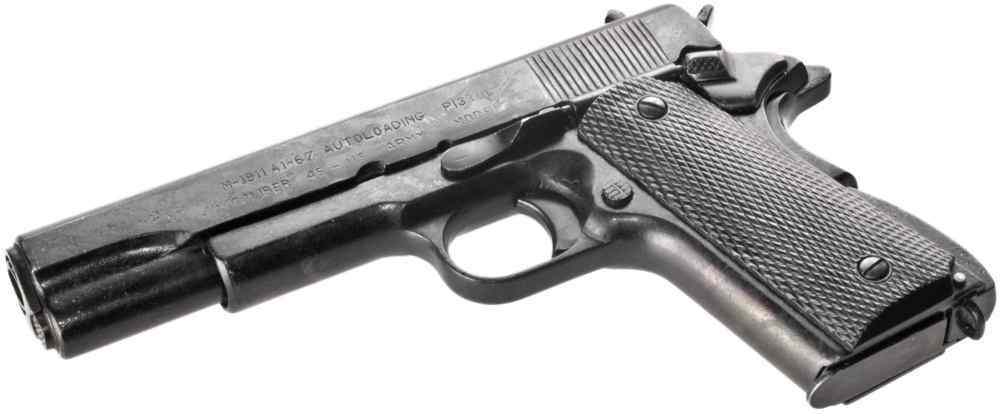“Choosing the right size for your needs and comfort.”
Accuracy Differences Between Full-Size, Compact, and Subcompact Semi-Auto Pistols
When it comes to choosing a semi-auto pistol, one of the key factors to consider is the size of the gun. Full-size, compact, and subcompact pistols each have their own advantages and disadvantages, particularly when it comes to accuracy. Understanding the differences between these sizes can help you make an informed decision on which type of pistol is best suited for your needs.
Full-size pistols are typically the largest of the three options, with longer barrels and larger grips. This size allows for better accuracy due to the increased sight radius and improved stability when shooting. The added weight of a full-size pistol also helps to reduce recoil, making it easier to stay on target after each shot. These factors make full-size pistols a popular choice for competitive shooters and those who prioritize accuracy above all else.
On the other hand, compact pistols are smaller and lighter than full-size pistols, making them easier to carry and conceal. While this makes them a popular choice for everyday carry, the reduced size can have an impact on accuracy. The shorter sight radius and lighter weight of compact pistols can make them more difficult to shoot accurately, especially at longer distances. However, with practice and proper technique, shooters can still achieve good accuracy with a compact pistol.
Subcompact pistols are the smallest of the three options, designed for maximum concealability. While their small size makes them easy to carry, it can also make them more challenging to shoot accurately. The short sight radius and minimal grip surface area can make it difficult to maintain control and accuracy when firing a subcompact pistol. Additionally, the increased recoil due to the smaller size can further impact accuracy, especially for inexperienced shooters.
When comparing the accuracy of full-size, compact, and subcompact pistols, it’s important to consider your intended use for the gun. If you prioritize accuracy and plan to use the pistol primarily for target shooting or competition, a full-size pistol may be the best option. The longer sight radius and increased stability of a full-size pistol can help you achieve better accuracy at longer distances.
If you plan to carry the pistol for self-defense or everyday carry, a compact pistol may be a better choice. While compact pistols may not offer the same level of accuracy as full-size pistols, their smaller size and lighter weight make them easier to carry comfortably. With practice and proper training, shooters can still achieve good accuracy with a compact pistol.
For those who prioritize concealability above all else, a subcompact pistol may be the best option. While subcompact pistols may be the most challenging to shoot accurately due to their small size and increased recoil, they excel in situations where concealment is paramount. With proper training and practice, shooters can still achieve adequate accuracy with a subcompact pistol.
In conclusion, the size of a semi-auto pistol can have a significant impact on accuracy. Full-size pistols offer the best accuracy due to their longer sight radius and increased stability, making them a popular choice for target shooting and competition. Compact pistols strike a balance between size and accuracy, making them a good choice for everyday carry. Subcompact pistols prioritize concealability over accuracy, making them ideal for situations where discretion is key. By understanding the differences between these sizes, you can choose the pistol that best fits your needs and preferences.

Recoil Management in Full-Size, Compact, and Subcompact Semi-Auto Pistols
When it comes to choosing a semi-automatic pistol, one of the key factors to consider is recoil management. Recoil, the backward movement of the gun when fired, can greatly affect your accuracy and comfort while shooting. Different sizes of pistols – full-size, compact, and subcompact – each have their own characteristics when it comes to recoil management.
Full-size pistols, as the name suggests, are larger and heavier than compact and subcompact pistols. This extra size and weight can help to absorb some of the recoil generated when firing a round. The added mass of a full-size pistol can make it more stable in your hand, reducing the amount of muzzle flip and felt recoil. This can lead to more accurate and comfortable shooting, especially for those who are new to shooting or have weaker hand strength.
Compact pistols are smaller and lighter than full-size pistols, making them easier to carry and conceal. However, this reduction in size and weight can also mean increased felt recoil. The smaller grip and shorter barrel of a compact pistol can make it more difficult to control during rapid fire, leading to decreased accuracy. While compact pistols are popular for concealed carry due to their size, shooters may need to practice more to effectively manage the recoil of these guns.
Subcompact pistols are the smallest of the three sizes, designed for maximum concealability. These pistols are lightweight and easy to carry, but they also have the most pronounced recoil of the three sizes. The small size of a subcompact pistol can make it harder to grip securely, leading to increased muzzle flip and felt recoil. Shooters may find it more challenging to control a subcompact pistol during rapid fire or when shooting larger calibers.
When comparing full-size, compact, and subcompact pistols for recoil management, it’s important to consider your own shooting abilities and preferences. If you prioritize accuracy and comfort while shooting, a full-size pistol may be the best choice for you. The added weight and size of a full-size pistol can help to mitigate recoil and make shooting more enjoyable.
On the other hand, if you need a pistol for concealed carry, a compact or subcompact pistol may be more suitable. While these smaller pistols may have more recoil, they are easier to carry and conceal, making them ideal for everyday carry. Shooters who choose a compact or subcompact pistol should be prepared to practice regularly to improve their recoil management skills.
In conclusion, recoil management is an important factor to consider when choosing a semi-automatic pistol. Full-size pistols offer the best recoil management due to their larger size and weight, while compact and subcompact pistols may have more pronounced recoil. Shooters should carefully consider their shooting abilities and preferences when selecting a pistol size, ensuring that they can effectively manage recoil and shoot accurately. By choosing the right size pistol for your needs, you can enjoy shooting more comfortably and confidently.
Concealability Factors of Full-Size, Compact, and Subcompact Semi-Auto Pistols
When it comes to choosing a semi-auto pistol for concealed carry, there are several factors to consider. One of the most important factors is the size of the pistol. Full-size, compact, and subcompact pistols each have their own advantages and disadvantages when it comes to concealability.
Full-size pistols are typically the largest of the three options. They are designed for duty use and are often used by law enforcement and military personnel. While full-size pistols offer the most firepower and are the easiest to shoot accurately, they can be difficult to conceal. Their larger size can make them uncomfortable to carry for long periods of time, and they may print (show through clothing) more easily than smaller pistols.
Compact pistols are a good compromise between full-size and subcompact pistols. They are smaller and lighter than full-size pistols, making them easier to conceal, but still offer a decent amount of firepower. Compact pistols are a popular choice for concealed carry because they strike a good balance between size and shootability. They are comfortable to carry and can be easily concealed under a variety of clothing options.
Subcompact pistols are the smallest of the three options and are designed specifically for concealed carry. They are lightweight and easy to conceal, making them a popular choice for everyday carry. While subcompact pistols may have a shorter barrel and grip than full-size or compact pistols, they still pack a punch and are capable of stopping a threat. However, their smaller size can make them more difficult to shoot accurately, especially for shooters with larger hands.
When comparing full-size, compact, and subcompact pistols for concealability, it’s important to consider how you plan to carry the pistol. If you plan to carry inside the waistband (IWB), a compact or subcompact pistol may be a better choice, as they are easier to conceal under clothing. If you plan to carry outside the waistband (OWB), a full-size pistol may be more comfortable to carry, as it will distribute the weight of the pistol more evenly.
Another factor to consider when choosing a pistol for concealed carry is the clothing you typically wear. If you wear tight-fitting clothing, a subcompact pistol may be the best option, as it will be easier to conceal. If you wear loose-fitting clothing, a compact or full-size pistol may be more comfortable to carry, as they will not print as easily.
Ultimately, the best pistol for concealed carry is the one that fits your hand comfortably, is easy for you to shoot accurately, and is comfortable for you to carry. It’s important to try out different pistols at the range before making a decision, as what works for one person may not work for another. By considering the size and concealability factors of full-size, compact, and subcompact pistols, you can choose the best option for your needs and preferences.
Capacity Variances Among Full-Size, Compact, and Subcompact Semi-Auto Pistols
When it comes to choosing a semi-automatic pistol, one of the key factors to consider is the size of the firearm. Full-size, compact, and subcompact pistols each have their own advantages and disadvantages, and understanding the differences between them can help you make an informed decision.
One of the main differences between full-size, compact, and subcompact pistols is their capacity. Full-size pistols typically have the largest capacity, with most models holding anywhere from 15 to 20 rounds of ammunition. This makes them a popular choice for those who prioritize firepower and don’t mind carrying a larger firearm.
Compact pistols, on the other hand, usually have a slightly smaller capacity, typically ranging from 10 to 15 rounds. While they may not hold as many rounds as full-size pistols, compact pistols are more easily concealable and are a popular choice for those who want a balance between firepower and ease of carry.
Subcompact pistols have the smallest capacity of the three, typically holding anywhere from 6 to 10 rounds. These pistols are designed for maximum concealability and are often chosen by those who prioritize being able to carry their firearm discreetly. While subcompact pistols may not hold as many rounds as their larger counterparts, they are still a popular choice for those who want a reliable self-defense option.
When it comes to choosing a pistol based on capacity, it’s important to consider your own needs and preferences. If you prioritize firepower and don’t mind carrying a larger firearm, a full-size pistol may be the best choice for you. If you want a balance between firepower and ease of carry, a compact pistol may be the way to go. And if you prioritize concealability above all else, a subcompact pistol may be the best option for you.
It’s also worth noting that capacity isn’t the only factor to consider when choosing a pistol. Other factors, such as ergonomics, recoil, and ease of use, should also be taken into account. Ultimately, the best pistol for you will depend on your own personal preferences and needs.
In conclusion, full-size, compact, and subcompact pistols each have their own advantages and disadvantages when it comes to capacity. Full-size pistols typically have the largest capacity, compact pistols offer a balance between firepower and ease of carry, and subcompact pistols prioritize concealability. When choosing a pistol based on capacity, it’s important to consider your own needs and preferences, as well as other factors such as ergonomics and ease of use. By taking all of these factors into account, you can choose the pistol that best fits your needs and preferences.
Ergonomics and Handling Characteristics of Full-Size, Compact, and Subcompact Semi-Auto Pistols
When it comes to choosing a semi-auto pistol, one of the key factors to consider is the size of the gun. Full-size, compact, and subcompact pistols each have their own unique ergonomics and handling characteristics that can greatly impact your shooting experience. In this article, we will compare the ergonomics and handling characteristics of full-size, compact, and subcompact semi-auto pistols to help you make an informed decision.
Full-size pistols are typically the largest of the three categories, with longer barrels and larger grips. This size allows for better accuracy and control, as the increased weight helps to reduce recoil. The longer sight radius also makes it easier to aim accurately at longer distances. However, the larger size of full-size pistols can make them more difficult to conceal and carry, especially for those with smaller hands or frames.
Compact pistols offer a middle ground between full-size and subcompact pistols. They are smaller and lighter than full-size pistols, making them easier to carry and conceal. However, the reduced size can also lead to increased felt recoil and decreased accuracy, especially at longer distances. Compact pistols are a popular choice for those looking for a balance between size and shootability.
Subcompact pistols are the smallest of the three categories, with shorter barrels and smaller grips. These pistols are designed for maximum concealability and are often used as backup guns or for deep concealment. The small size of subcompact pistols can make them more difficult to shoot accurately, especially for those with larger hands. The reduced weight can also lead to increased felt recoil, making them less comfortable to shoot for extended periods of time.
When it comes to ergonomics, full-size pistols typically offer the best grip size and shape for most shooters. The larger grip allows for a more secure hold on the gun, which can improve accuracy and control. Compact pistols often have slightly smaller grips, which may be more comfortable for those with smaller hands. Subcompact pistols have the smallest grips, which can make them more difficult to hold onto, especially during rapid fire.
In terms of handling characteristics, full-size pistols are generally the easiest to shoot accurately. The increased weight helps to reduce recoil, making them more comfortable to shoot for extended periods of time. Compact pistols can be slightly more difficult to control due to their smaller size and lighter weight. Subcompact pistols are the most challenging to shoot accurately, as the small size and reduced weight can lead to increased felt recoil and decreased control.
In conclusion, the size of a semi-auto pistol can greatly impact its ergonomics and handling characteristics. Full-size pistols offer the best accuracy and control, but can be more difficult to conceal and carry. Compact pistols provide a balance between size and shootability, while subcompact pistols are designed for maximum concealability at the expense of accuracy and control. Ultimately, the best choice will depend on your individual needs and preferences.






